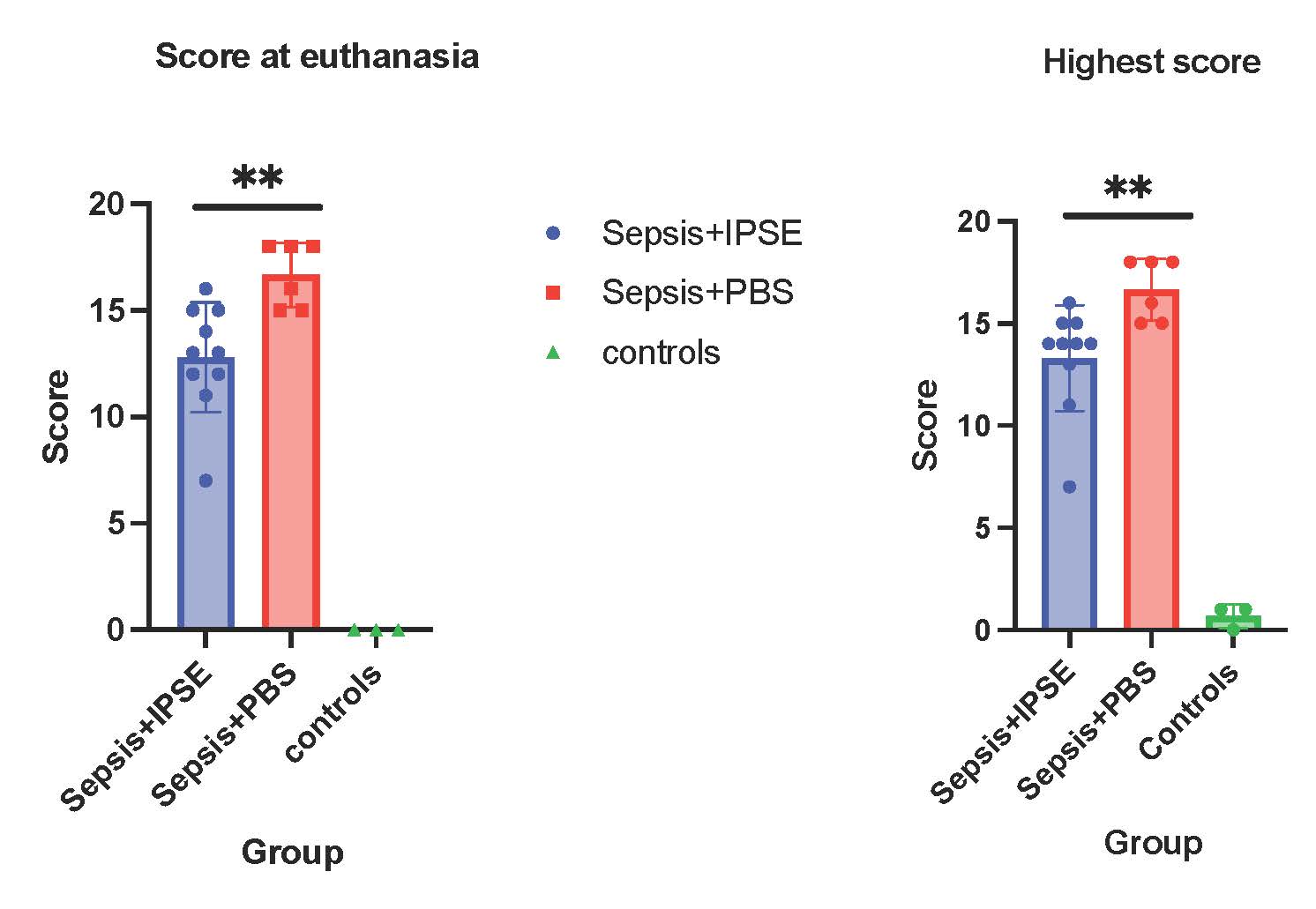Back
Introduction: Urinary tract reconstruction with bowel carries risks of bowel leak and resulting sepsis. Even with the current standard of care, sepsis remains a challenging and sometimes life-threatening condition. Urogenital and hepatoenteric schistosomiasis transmission depend upon the successful transit of eggs across the bladder and intestinal walls, respectively. However, egg passage disrupts local tissues and can lead to bacterial translocation, sepsis, and host death, an undesirable outcome for schistosomes that rely on continuous oviposition to maximize reproductive success. There is evidence that schistosomes may immunoregulate their hosts to prevent sepsis. Schistosoma mansoni-infected mice develop endotoxemic sepsis and die if their myeloid cells lack the IL-4 receptor. Mice whose bladders are injected with Schistosoma haematobium eggs also develop endotoxemia and die if phagocytic cells are depleted. Schistosoma eggs secrete large amount of the interleukin-4-inducing principle of S. mansoni eggs (IPSE). These findings led us to hypothesize that IPSE may be a schistosome molecule that prevents host sepsis.
Methods: To test this hypothesis, mice underwent intraperitoneal injection with cecal slurry to induce sepsis. They then received intravenous IPSE or vehicle injection immediately or 1 hour post-sepsis induction with cecal slurry injection. Mice were then assigned clinical sepsis scores every 2 hours for 18 hours in a blinded fashion (maximum score of 28).
Results: Both mouse groups (treated vs. non-treated) had similar baseline scores. Whereas mice given vehicle injections developed progressively severe sepsis (15-18), IPSE-treated mice immediately after cecal slurry injection did not exceed a score of 16 at any time point. Additionally, at time of euthanasia (18 hours post-sepsis induction), there was a decrease in average sepsis scores in the IPSE-treated group compared to vehicle-treated mice, that continued to have a worsening clinical course. A 48-plex cytokine analysis of mouse plasma collected at time of euthanasia from mice that were given either IPSE or vehicle 1 hour post-sepsis induction,was performed using the Luminex platform. This revealed significant changes in multiple cytokines, consistent with IPSE’s known immunoregulatory mechanisms.
Conclusions: These findings support the hypothesis that IPSE may prevent schistosomiasis-associated sepsis and suggests that IPSE could be developed as a therapeutic agent for other forms of sepsis. SOURCE OF
Funding: NIDDK

Podium Session
Session: PD19: Infections/Inflammation/Cystic Disease of the Genitourinary Tract: Kidney & Bladder II
PD19-07: A S. haematobium Immunomodulatory Protein Prevents Intraabdominal Sepsis
Saturday, April 29, 2023
2:00 PM – 2:10 PM CST
Location: S401C
- MH
Michael Hsieh, MD, PHD
George Washington University
Podium Presenter(s)
Introduction: Urinary tract reconstruction with bowel carries risks of bowel leak and resulting sepsis. Even with the current standard of care, sepsis remains a challenging and sometimes life-threatening condition. Urogenital and hepatoenteric schistosomiasis transmission depend upon the successful transit of eggs across the bladder and intestinal walls, respectively. However, egg passage disrupts local tissues and can lead to bacterial translocation, sepsis, and host death, an undesirable outcome for schistosomes that rely on continuous oviposition to maximize reproductive success. There is evidence that schistosomes may immunoregulate their hosts to prevent sepsis. Schistosoma mansoni-infected mice develop endotoxemic sepsis and die if their myeloid cells lack the IL-4 receptor. Mice whose bladders are injected with Schistosoma haematobium eggs also develop endotoxemia and die if phagocytic cells are depleted. Schistosoma eggs secrete large amount of the interleukin-4-inducing principle of S. mansoni eggs (IPSE). These findings led us to hypothesize that IPSE may be a schistosome molecule that prevents host sepsis.
Methods: To test this hypothesis, mice underwent intraperitoneal injection with cecal slurry to induce sepsis. They then received intravenous IPSE or vehicle injection immediately or 1 hour post-sepsis induction with cecal slurry injection. Mice were then assigned clinical sepsis scores every 2 hours for 18 hours in a blinded fashion (maximum score of 28).
Results: Both mouse groups (treated vs. non-treated) had similar baseline scores. Whereas mice given vehicle injections developed progressively severe sepsis (15-18), IPSE-treated mice immediately after cecal slurry injection did not exceed a score of 16 at any time point. Additionally, at time of euthanasia (18 hours post-sepsis induction), there was a decrease in average sepsis scores in the IPSE-treated group compared to vehicle-treated mice, that continued to have a worsening clinical course. A 48-plex cytokine analysis of mouse plasma collected at time of euthanasia from mice that were given either IPSE or vehicle 1 hour post-sepsis induction,was performed using the Luminex platform. This revealed significant changes in multiple cytokines, consistent with IPSE’s known immunoregulatory mechanisms.
Conclusions: These findings support the hypothesis that IPSE may prevent schistosomiasis-associated sepsis and suggests that IPSE could be developed as a therapeutic agent for other forms of sepsis. SOURCE OF
Funding: NIDDK

